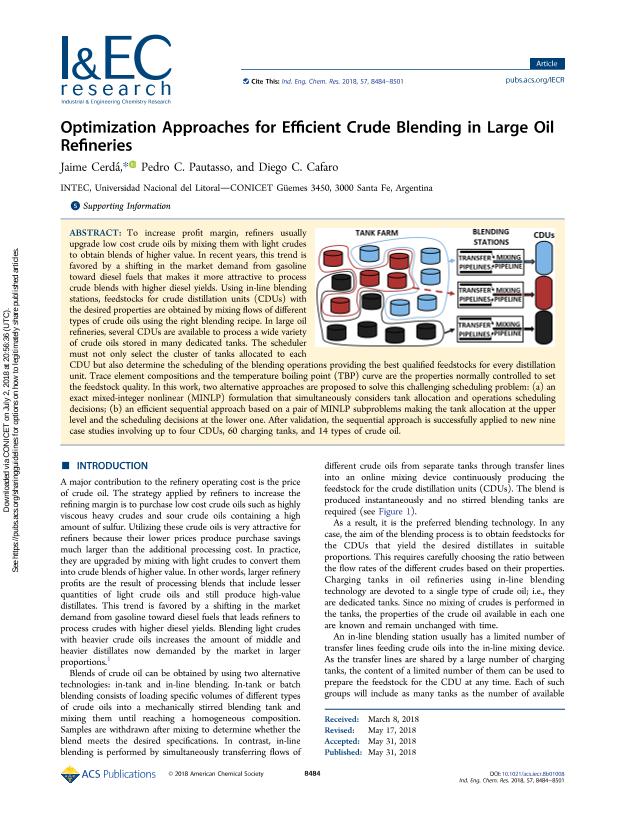Artículo
Optimization Approaches for Efficient Crude Blending in Large Oil Refineries
Fecha de publicación:
06/2018
Editorial:
American Chemical Society
Revista:
Industrial & Engineering Chemical Research
ISSN:
0888-5885
Idioma:
Inglés
Tipo de recurso:
Artículo publicado
Clasificación temática:
Resumen
To increase profit margin, refiners usually upgrade low cost crude oils by mixing them with light crudes to obtain blends of higher value. In recent years, this trend is favored by a shifting in the market demand from gasoline toward diesel fuels that makes it more attractive to process crude blends with higher diesel yields. Using in-line blending stations, feedstocks for crude distillation units (CDUs) with the desired properties are obtained by mixing flows of different types of crude oils using the right blending recipe. In large oil refineries, several CDUs are available to process a wide variety of crude oils stored in many dedicated tanks. The scheduler must not only select the cluster of tanks allocated to each CDU but also determine the scheduling of the blending operations providing the best qualified feedstocks for every distillation unit. Trace element compositions and the temperature boiling point (TBP) curve are the properties normally controlled to set the feedstock quality. In this work, two alternative approaches are proposed to solve this challenging scheduling problem: (a) an exact mixed-integer nonlinear (MINLP) formulation that simultaneously considers tank allocation and operations scheduling decisions; (b) an efficient sequential approach based on a pair of MINLP subproblems making the tank allocation at the upper level and the scheduling decisions at the lower one. After validation, the sequential approach is successfully applied to new nine case studies involving up to four CDUs, 60 charging tanks, and 14 types of crude oil.
Palabras clave:
Crude Oil
,
Blending
,
Optimization
,
TBP Curve
Archivos asociados
Licencia
Identificadores
Colecciones
Articulos(INTEC)
Articulos de INST.DE DES.TECNOL.PARA LA IND.QUIMICA (I)
Articulos de INST.DE DES.TECNOL.PARA LA IND.QUIMICA (I)
Citación
Cerda, Jaime; Pautasso, Pedro Carlos; Cafaro, Diego Carlos; Optimization Approaches for Efficient Crude Blending in Large Oil Refineries; American Chemical Society; Industrial & Engineering Chemical Research; 57; 25; 6-2018; 8484-8501
Compartir
Altmétricas




